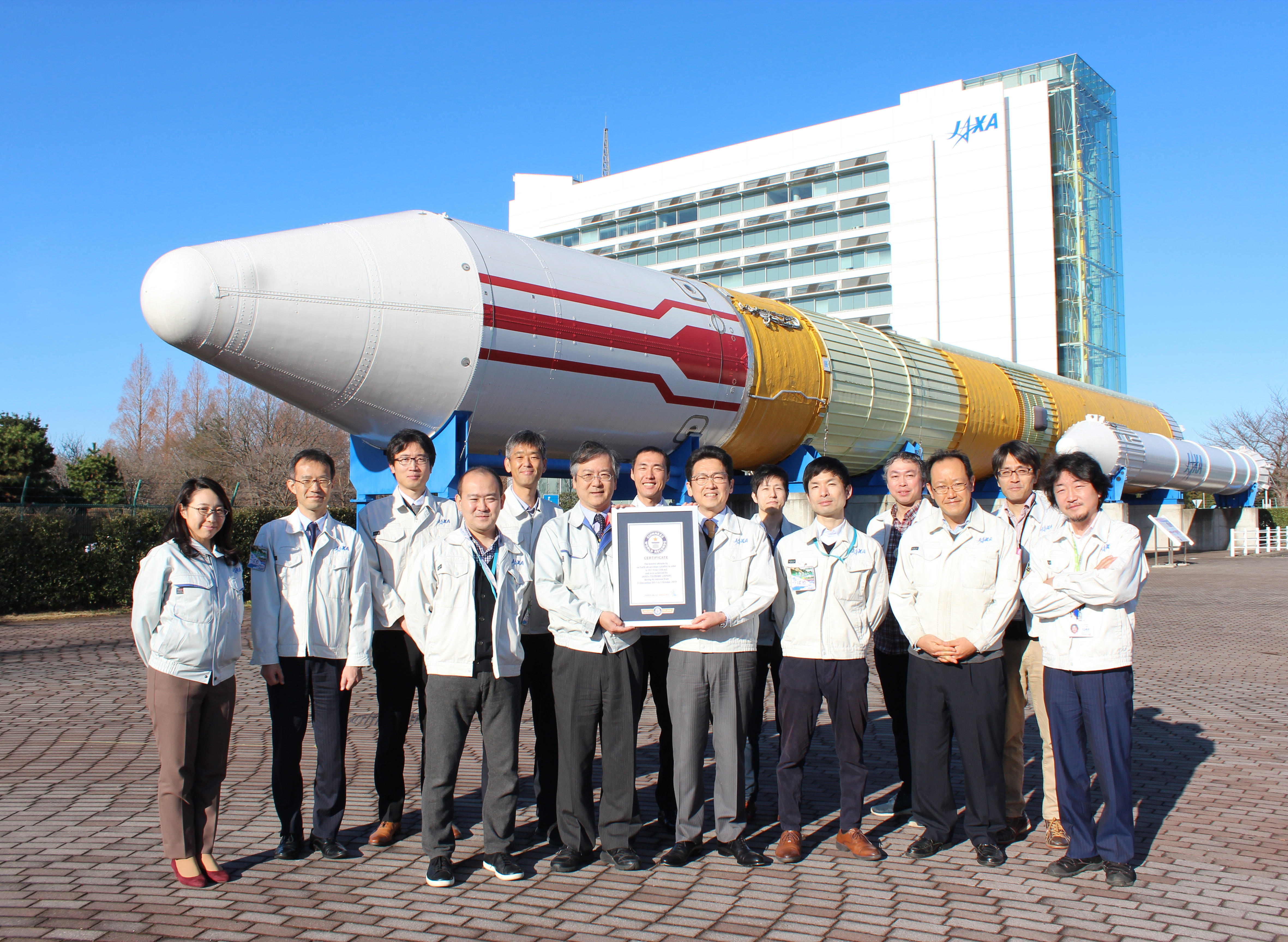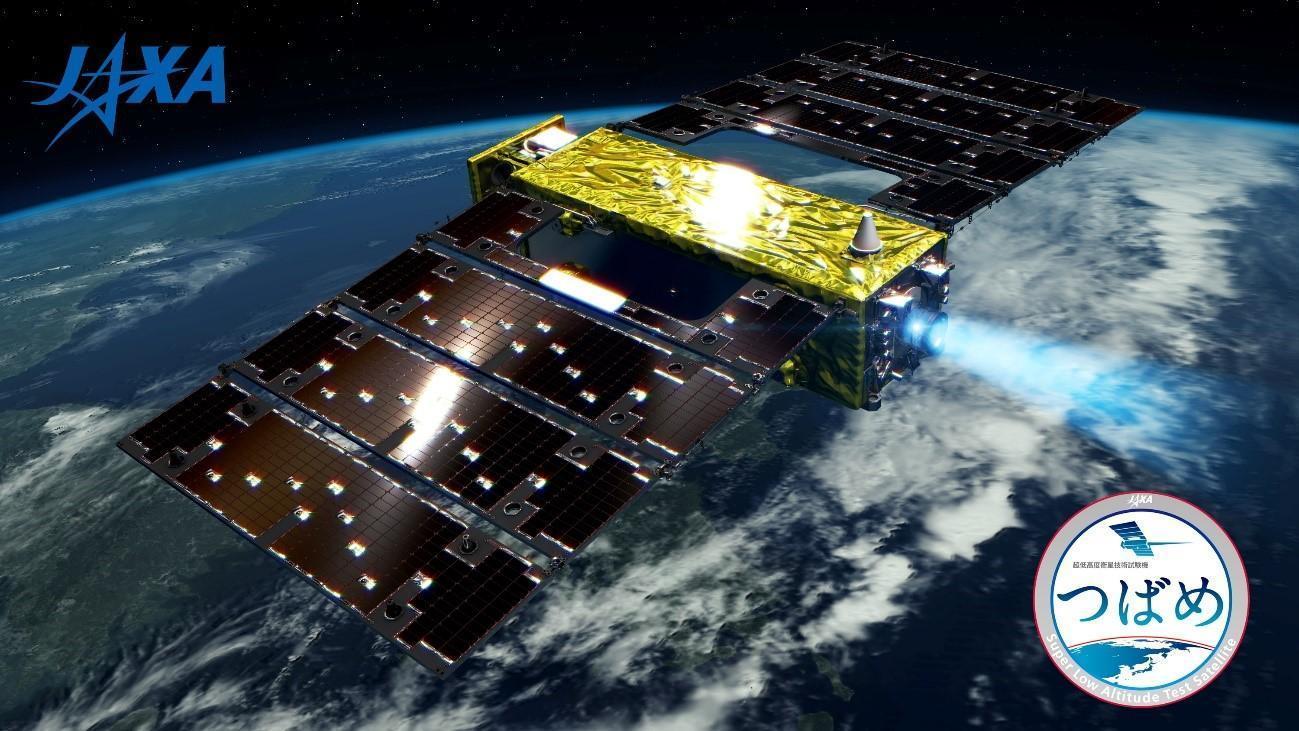Super Low Altitude Test Satellite (SLATS) “TSUBAME”
has set a GUINESS WORLD RECORDS(R)
December 24, 2019 (JST)
National Research & Development Agency
Japan Aerospace Exploration Agency (JAXA)
Japan Aerospace Exploration Agency (JAXA) announced that its Super Low Altitude Test Satellite “TSUBAME” (SLATS) was registered by the Guinness World Records*1 as having achieved the “lowest altitude by an Earth observation satellite in orbit.”

©JAXA
1. Details on the Guinness World Record set by the Super Low Altitude Test Satellite “TSUBAME” (SLATS)
URL:https://www.guinnessworldrecords.jp/world-records/592663-lowest-altitude-earth-observation-satellite-in-orbit
Name of record: Lowest altitude by an Earth observation satellite in orbit
Record values: Orbital altitude of 167.4 km*2
Record Text:
The lowest altitude by an Earth observation satellite in orbit is 167.4 km (104 mi) and was achieved by JAXA's TSUBAME (JAPAN) during its mission from 23 December 2017 to 1 October 2019.
Further info:
TSUBAME was a Super Low Altitude Test Satellite operated by Japan Aerospace Exploration Agency, or JAXA. With its ion engine, TSUBAME was able to capture high-resolution satellite images despite the atmospheric drag and density of atomic oxygen present in super low altitudes. It maintained seven different orbital altitudes, with 167.4 km being the lowest. At 167.4 km altitude, Tsubame used both its ion engine system and gas-jet thrusters.
2. Achievements made by “TSUBAME” (SLATS) and future prospects
A super low altitude satellite has the merit of being able to take high resolution satellite images using a small sensor. However, when in orbit at an altitude that is categorized as being super low—at an altitude between 200 km and 300 km—the satellite will be exposed to 1,000 times more atmospheric resistance and concentrated atomic oxygen that would cause it to deteriorate as compared to other Earth observation satellites orbiting at the usual altitudes. Thus, super low altitude has been considered as being unsuitable for Earth observation satellites that require precise positioning, orbit control and long-term satellite operations.
“TSUBAME” first maintained an orbital altitude of 271.5 km, which was gradually lowered to finally reach the 167.4 km altitude that was recognized as a world record this time by the Guinness World Records. This orbit in super low altitude was maintained for a period of seven days. During its time orbiting in the record-breaking altitude, “TSUBAME” conducted tests on taking high resolution satellite images, and succeeded in obtaining good results. The test satellite also succeeded in acquiring data of atmospheric density, atomic oxygen density, and the level of deterioration of material samples that were exposed to the atmosphere. Furthermore, the satellite also succeeded in demonstrating that the material developed by JAXA has the ability to withstand exposure to atomic oxygen for a long period of time.
JAXA will make use of the information acquired through “TSUBAME” to achieve further utilization of space for the future in order to help achieve scientific and technological growth and contribute toward resolving the social issues in Japan.
■Comment from SASAKI Masanori, SLATS Project Manager:
“I think we managed to create this unprecedented satellite that is able to maintain orbit in super low altitude, not only because of the systematic and fundamental technologies that we possess to develop and operate artificial satellites, including our many years of experience of the ion engine and the tracking & control technologies, but also because of the high level of science and technology we have in Japan. I would like to make use of this achievement toward the future science, technology and satellite utilization, and contribute toward helping to solve as many of our social issues as possible.”
| *1 | Guinness World Records is a registered trademark by Guinness World Records Limited. |
|---|---|
| *2 | Orbital altitude = Average semi-major axis – Equatorial radius. |
Reference
About “TSUBAME” (SLATS)
JAXA is conducting research to make use of orbit altitudes of less than 300 km for future earth observations and other purposes. This orbital range, known as super low altitude, is an area that has yet to be used by artificial satellites. This Super Low Altitude Test Satellite (SLATS) is the first ever earth observation satellite that went into orbit at this altitude. “TSUBAME” made use of the ion engine technology that JAXA has cultivated, and conducted technological evaluations to enable the further development of super low altitude satellites.

| Items | Specifications, achievements, etc. |
|---|---|
| Main mission instruments |
(1) Atomic Oxygen (AO) Monitoring System
(2) Small and High Resolution Optical Sensor |
| Size | 2.5 m (X) × 5.2 m (Y) × 0.9m (Z) (when expanded in orbit) |
| Weight | 383 kg |
| Generated power | 1,140 W or more |
| Design life | 2 years or longer |
| Results of Orbital Maintaining Operation | Tsubame successfully completed its orbital maintaining operation using ion engine technology at all the seven altitudes as follows: 271.5 km and 216.8 km each for 38 days 250 km, 240 km, 230 km, 181.1 km, and 167.4 km each for 7 days (At 167.4 km altitude, Tsubame used both its ion engine system and RCS because of the large atmospheric drag.) |
| Launch date | December 23, 2017 |
| Launch vehicle | Launch on an H-IIA rocket number 37 |
| Operation end date | October 1, 2019 |